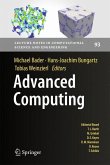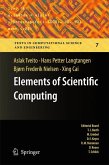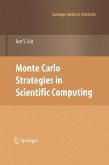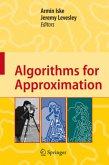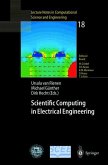The book of nature is written in the language of mathematics -- Galileo Galilei
How is it possible to predict weather patterns for tomorrow, with access solely to today's weather data? And how is it possible to predict the aerodynamic behavior of an aircraft that has yet to be built?
The answer is computer simulations based on mathematical models - sets of equations - that describe the underlying physical properties. However, these equations are usually much too complicated to solve, either by the smartest mathematician or the largest supercomputer. This problem is overcome by constructing an approximation: a numerical model with a simpler structure can be translated into a program that tells the computer how to carry out the simulation.
This book conveys the fundamentals of mathematical models, numerical methods and algorithms. Opening with a tutorial on mathematical models and analysis, it proceeds to introduce the most important classes of numerical methods, with finite element, finite difference and spectral methods as central tools. The concluding section describes applications in physics and engineering, including wave propagation, heat conduction and fluid dynamics. Also covered are the principles of computers and programming, including MATLAB®.
How is it possible to predict weather patterns for tomorrow, with access solely to today's weather data? And how is it possible to predict the aerodynamic behavior of an aircraft that has yet to be built?
The answer is computer simulations based on mathematical models - sets of equations - that describe the underlying physical properties. However, these equations are usually much too complicated to solve, either by the smartest mathematician or the largest supercomputer. This problem is overcome by constructing an approximation: a numerical model with a simpler structure can be translated into a program that tells the computer how to carry out the simulation.
This book conveys the fundamentals of mathematical models, numerical methods and algorithms. Opening with a tutorial on mathematical models and analysis, it proceeds to introduce the most important classes of numerical methods, with finite element, finite difference and spectral methods as central tools. The concluding section describes applications in physics and engineering, including wave propagation, heat conduction and fluid dynamics. Also covered are the principles of computers and programming, including MATLAB®.
From the reviews:
"Scientific computing is considered to comprise mathematical modeling, numerical analysis as well as issues of programming and implementation. Correspondingly, the book introduces all areas required and structures the material in 5 parts, altogether comprising 19 chapters. ... In summary, the books presents the fundamentals of scientific computing in such a way that students from mathematics as well as from science or engineering can benefit." (Gudula Rünger, Zentralblatt MATH, March, 2012)
"Scientific computing is considered to comprise mathematical modeling, numerical analysis as well as issues of programming and implementation. Correspondingly, the book introduces all areas required and structures the material in 5 parts, altogether comprising 19 chapters. ... In summary, the books presents the fundamentals of scientific computing in such a way that students from mathematics as well as from science or engineering can benefit." (Gudula Rünger, Zentralblatt MATH, March, 2012)



